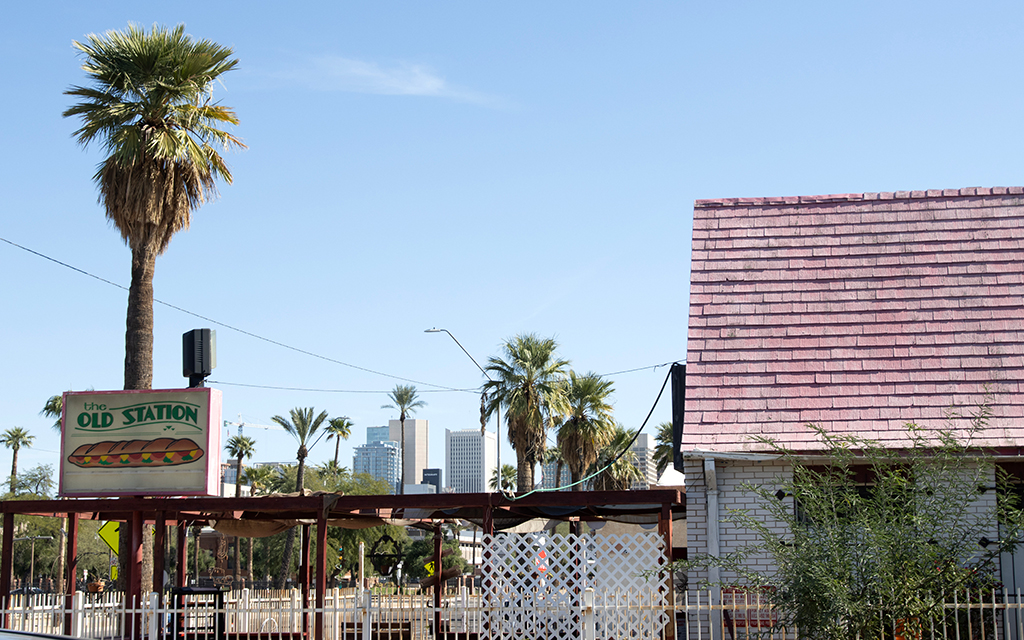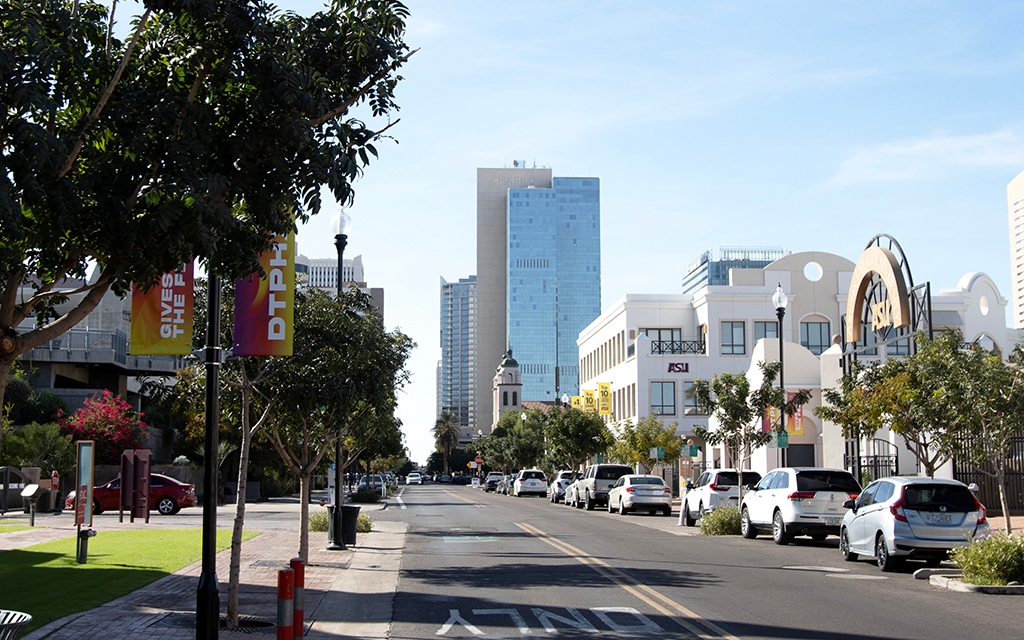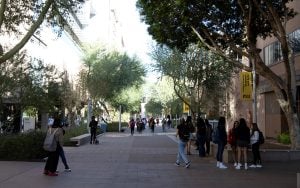
Downtown Phoenix has gone through significant changes since 2001, the last time the Arizona Diamondbacks were in the World Series. Roosevelt Row now sports a number of bars and restaurants in addition to housing. (Photo by Hunter Fore/Cronkite News)

The Old Station Sub Shop at 1301 W. Jefferson St., between the Capitol and the downtown core, is family owned and operated. (Photo by Hunter Fore/Cronkite News)

In 2001, Phoenix was the sixth-largest city in the country with approximately 1.3 million residents. Today, Phoenix is fifth-largest, with 1.6 million residents. The population of downtown Phoenix has tripled in that period. (Photo by Hunter Fore/Cronkite News)
PHOENIX – Downtown has gone through significant changes since the last time the Arizona Diamondbacks were in the World Series, in 2001.
The Diamondbacks are hosting several World Series games at Chase Field this year, but in 2001 the stadium was Bank One Ballpark and just 3 years old.
In 2001, the downtown sidewalks were near-empty due to the lack of hotels, bars and restaurants in the area.
“I always point to the sidewalks, said R.J. Price, chief growth officer at Downtown Phoenix Inc. The organization works to enhance downtown. “Sidewalks are the best parameter for the health of downtown, and our sidewalks have never been more energized and more vibrant and more full like today in 2023.”
The organization defines downtown as the area between Seventh Street and Seventh Avenue, from McDowell Road to the north to Lincoln Street to the south., but some of its services extend beyond that area.

The Arizona State University Downtown Phoenix campus opened in 2006. Photo taken Nov. 1, 2023. (Photo by Hunter Fore/Cronkite News)
“The benefits of the residential growth, student population growth, the public transportation, the new hotels, 230 bars and restaurants – which is 160% growth since 2001 – all create a really rich atmosphere that attracts people,” Price said.
“You can actually go out to a late dinner on Wednesday night in downtown Phoenix. You couldn’t have done that in 2001, there was nobody open,” Price said.
In 2001, the downtown ambassador program launched. The DTPHX Ambassadors aim to make a person’s visit to downtown Phoenix safe, enjoyable and memorable by offering information and assistance all year.
In 2001, Phoenix was the sixth-largest city in the country with approximately 1.3 million residents. In 2023, Phoenix is fifth-largest with 1.6 million residents. The downtown population has tripled.
As the population grew, transit advocates called for a new mode of transportation.
The initial 20-mile light rail opened in December 2008. The light rail is now 28 miles long and has 38 stations.
During the last World Series, there was no light rail, leaving fans to find other modes of transportation. The Valley Metro light rail has stops that are a short walk from Chase Field.
The Arizona State University Downtown Phoenix campus opened in 2006 and has only grown since then.
“There’s 15,000 students attending classes downtown that weren’t here in 2001,” Price said.

Fry’s became the first grocery store in the downtown core in 2019 and is steps from Chase Field. (Photo by Hunter Fore/Cronkite News)
The first grocery store in the downtown core, Fry’s, didn’t open until 2019.
The biggest hotel downtown, the Sheraton Phoenix Downtown, wasn’t built until 2008.
But not all changes in and around downtown have been positive, according to one business owner.
The Old Station Sub Shop, located at 1301 W. Jefferson St., between the Capitol and downtown, is family owned and operated. Joe and Debbie Faillace have owned the shop since 1986.
“In 2001 we were doing great. My business went up for 20 years straight from 1986 to 2006 and then the Great Recession hit,” Joe Faillace said. “It never has really been the same. The state was beat up after that. I have a lot of loyal customers that have supported me through the years.”
Faillace pointed to the large homeless encampment known as “The Zone” as a problem for downtown and the surrounding area, though the city of Phoenix is working toward a Nov. 4 court-ordered deadline to remove tents and clean up the area.

